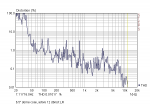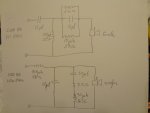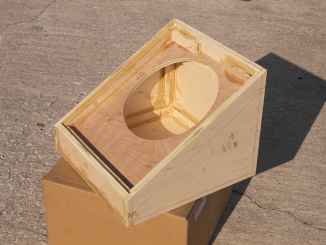Re: Probably time I contributed
Simon,
Thanks for your thoughts. A few caveats here, based on your situation:
1. Your total costs were about $8k or $2k per monitor, including Radian speakers, passive xover, wood, hardware, finish, and Speakerpower module (module would probably be half the cost of the unit). Speakerpower will not sell in small lots anymore, IIRC, so if someone wanted to adapt this to a powered situation, it would likely need to be a group buy. Am I correct that your investment would have been closer to $1k per monitor, unpowered? Also, you bought a biamp module but were happier with the sound when using the Radian passive xover. I am assuming you would go with the cheaper mono Speakerpower block if you had to do it again?
2. Were your costs higher for the components due to shipping to Europe, VAT, etc. than you would incur if located in the US?
3. I agree that price rather than quality will be the determining factor for hired sound, and most will settle for 80% of the quality at 1/2 the price at the Junior Varsity level.
Thank you for your input. I still have your design saved in my files.
FWIW, there are so many "powered speaker" monitor duty - pole mount mid/hi capable speakers now (like QSC 122/K12 and Ev Zxa5) that building your own is a DIY option for personal enjoyment or preference, rather than a necessity. This was not the case 10 years ago.
Gents,
Now that my name has been tossed around a few times due to the design I developed and posted on the old ProSoundWeb forum a few years ago, its probably time for me to add my thoughts to this design effort.
What I learned from the experience of designing and building 4 wedges that I still think are very good performers and get stinking loud, is that I wouldn't do it again. Here is why.
(snip - long discussion on return on investment, etc.)
Ciao
Simon
Simon,
Thanks for your thoughts. A few caveats here, based on your situation:
1. Your total costs were about $8k or $2k per monitor, including Radian speakers, passive xover, wood, hardware, finish, and Speakerpower module (module would probably be half the cost of the unit). Speakerpower will not sell in small lots anymore, IIRC, so if someone wanted to adapt this to a powered situation, it would likely need to be a group buy. Am I correct that your investment would have been closer to $1k per monitor, unpowered? Also, you bought a biamp module but were happier with the sound when using the Radian passive xover. I am assuming you would go with the cheaper mono Speakerpower block if you had to do it again?
2. Were your costs higher for the components due to shipping to Europe, VAT, etc. than you would incur if located in the US?
3. I agree that price rather than quality will be the determining factor for hired sound, and most will settle for 80% of the quality at 1/2 the price at the Junior Varsity level.
Thank you for your input. I still have your design saved in my files.
FWIW, there are so many "powered speaker" monitor duty - pole mount mid/hi capable speakers now (like QSC 122/K12 and Ev Zxa5) that building your own is a DIY option for personal enjoyment or preference, rather than a necessity. This was not the case 10 years ago.








